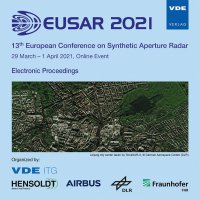An Effective Approach to Select Valid and Accurate Ground Control Points in SBAS-InSAR Technique
Conference: EUSAR 2021 - 13th European Conference on Synthetic Aperture Radar
03/29/2021 - 04/01/2021 at online
Proceedings: EUSAR 2021
Pages: 4Language: englishTyp: PDF
Authors:
Yan, Yan (School of Resources and Environment, University of Electronic Science and Technology of China (UESTC), Chengdu, Sichuan, China & Center for Information Geoscience, UESTC, Chengdu, Sichuan, China)
Wang, Yong (Department of Geography, Planning and Environment, East Carolina University, Greenville, NC, USA)
Abstract:
The traditional method to select ground control points (GCPs) in the SBAS-InSAR technique can be ineffective and inaccurate in remote mountainous areas where human-made targets are typically absent. In this study, the dualthreshold algorithm (DTA) (i.e., the coherence and amplitude dispersion index thresholds) that is successfully used to select permanent scatterer candidates (PSCs) in the PS-InSAR technique was adopted to identify GCP candidates. Coupled with 45 Sentinel-1 single look complex (SLC) data, the Xinmo landslide of China occurred on 24 June 2017, was showcased. With the DTA, 233 GCP candidates were identified around the landslide area. They were characterized by small deformation velocity (mm/year). The displacement time series further quantified such characterization at three locations. They were within the upper part of the tear-away zone that is unstable, above the tear-away zone that should be stable, and in the valley that is stable. The maximum displacements at the three locations were -90 mm, -25 mm, and 10 mm along the line of sight (LOS) direction, respectively, agreeing well with the unstable and stable assessment. Thus, the DTA was applicable and useful to select GCP candidates in rugged terrain.


